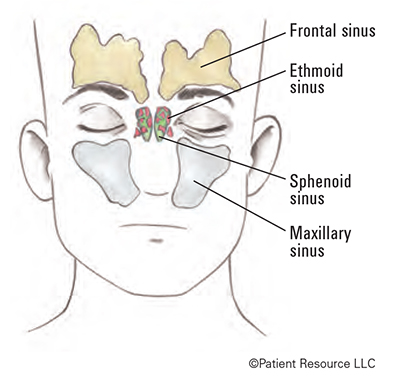Cancer Immunotherapy
Sinus & Nasal Cancer
The nasal cavity begins above the roof of the mouth, dividing in front to form the two nasal passages inside your nose and curving down in the back to meet your throat. The paranasal sinuses are hollow spaces inside the bones surrounding the nose, and they are named for the bones: the frontal, ethmoid, sphenoid and maxillary sinuses.
The nasal cavity and paranasal sinuses work together to filter, moisten and warm the air you breathe before it reaches your lungs. Cells in the sinuses make mucus to keep the nose from drying out.
Cancer affecting this area is typically squamous (SKWAY-mus) cell carcinoma, most commonly in the maxillary sinuses. Symptoms may include persistent sinus-related blockage, pressure, pain or headaches; a recurring sore inside the nose; nosebleeds; pain or swelling near the eyes; vision or hearing changes; facial numbness; a lump on the face or neck, inside the nose or on the roof of the mouth; or loose teeth, pain in the upper teeth or dentures that no longer fit well. A small number of nasopharyngeal cancers, especially in people of Asian descent, may be caused by the Epstein-Barr virus (EBV)*.
* Also known as human herpesvirus 4, it is one of the most common human viruses.




